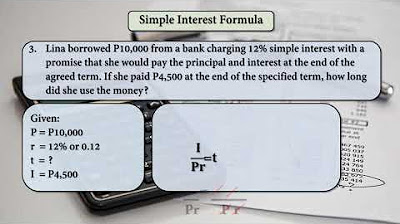Ring Faktor
Summary
TLDRThe video discusses the concept of factor rings and provides examples to illustrate the topic. It starts with an introduction to ideals and how they lead to the formation of factor rings, comparing this process to forming factor groups. The speaker demonstrates how to construct a factor ring, using examples like Z4 with ideals and factor classes. Another example involves a matrix ring over Z2, showing how factor rings can have different structures. The video concludes by highlighting the connection between factor rings and homomorphisms, hinting at their relevance in understanding more advanced algebraic concepts.
Takeaways
- 🔄 The video discusses the concept of a factor ring and examples related to it.
- 🧩 The process of forming a factor ring is similar to forming a quotient group.
- ➕ The operations for addition and multiplication in a factor ring are defined by partitioning the elements based on ideals.
- 🎓 The example of Z4 under modulo 4 is used to explain factor rings, showing how elements are partitioned.
- 💡 Ideal plays a key role in the formation of a factor ring, as it divides the elements into different equivalence classes.
- 🔍 The script explains how elements of the factor ring can be represented using specific operations on the ideals.
- 📐 A more complex example involving matrices over Z2 is also discussed, illustrating the creation of factor rings in a matrix context.
- 🧮 The matrix example shows that the factor ring formed from T2(Z2) has four distinct equivalence classes.
- 📊 Operations like addition and multiplication in the factor ring are applied based on the representative elements of the equivalence classes.
- 📚 The video suggests that learning about factor rings is essential for understanding more advanced algebraic concepts like homomorphisms and the fundamental theorem of ring theory.
Q & A
What is a factor ring, and how is it formed?
-A factor ring is formed by taking a ring and partitioning it using an ideal. The elements of the factor ring are the cosets of the ideal in the ring, and operations like addition and multiplication are defined on these cosets.
How are addition and multiplication operations defined in a factor ring?
-In a factor ring, the addition of two cosets is defined by adding the representatives of the cosets and then adding the ideal element. For multiplication, the representatives of the cosets are multiplied, and the result is added to the ideal.
What example of a factor ring is used in the video?
-The example used in the video is Z4 (integers modulo 4) with addition and multiplication defined modulo 4. An ideal I is chosen from Z4, and the factor ring Z4/I is discussed.
How are cosets formed in Z4 when using an ideal?
-Cosets in Z4 are formed by adding the elements of Z4 to the ideal I. For example, if the ideal is 2Z (even integers), the cosets would be {0, 2} and {1, 3}, forming two equivalence classes.
What are the properties of the cosets in a factor ring?
-In a factor ring, cosets either do not overlap (i.e., their intersection is the empty set), and each element of the ring belongs to exactly one coset. Operations like addition and multiplication between cosets are well-defined.
What is the significance of partitioning in a factor ring?
-Partitioning in a factor ring is significant because it divides the ring into distinct classes or cosets. Each coset represents an equivalence class under the relation defined by the ideal, which simplifies the structure of the ring.
What is the role of an ideal in creating a factor ring?
-An ideal is a special subset of a ring that allows the formation of a factor ring. It acts as a 'zero' for coset operations, meaning that when elements from the ideal are added to or multiplied by other ring elements, they behave like the additive or multiplicative identity in the quotient structure.
Can the cosets in a factor ring overlap?
-No, the cosets in a factor ring cannot overlap. They are disjoint sets, meaning the intersection of two different cosets is always the empty set.
How are the operations in a factor ring similar to operations in a group?
-The formation of a factor ring is similar to the formation of a quotient group, where operations like addition and multiplication in the factor ring follow the same principles as in group theory, but with an additional structure due to the ring's multiplication.
How are ideals and factor rings related to homomorphisms?
-Ideals and factor rings are closely related to ring homomorphisms. The factor ring can be seen as the image of a homomorphism, where the kernel of the homomorphism is the ideal. This connection is explored in the fundamental theorem of ring homomorphisms.
Outlines

This section is available to paid users only. Please upgrade to access this part.
Upgrade NowMindmap

This section is available to paid users only. Please upgrade to access this part.
Upgrade NowKeywords

This section is available to paid users only. Please upgrade to access this part.
Upgrade NowHighlights

This section is available to paid users only. Please upgrade to access this part.
Upgrade NowTranscripts

This section is available to paid users only. Please upgrade to access this part.
Upgrade NowBrowse More Related Video
5.0 / 5 (0 votes)





